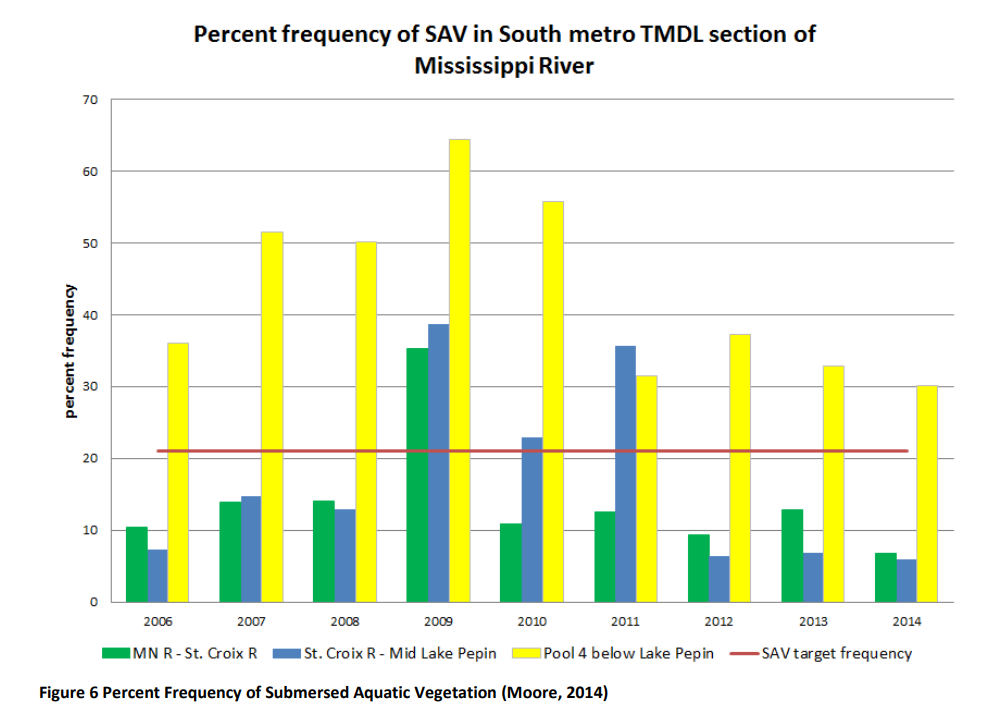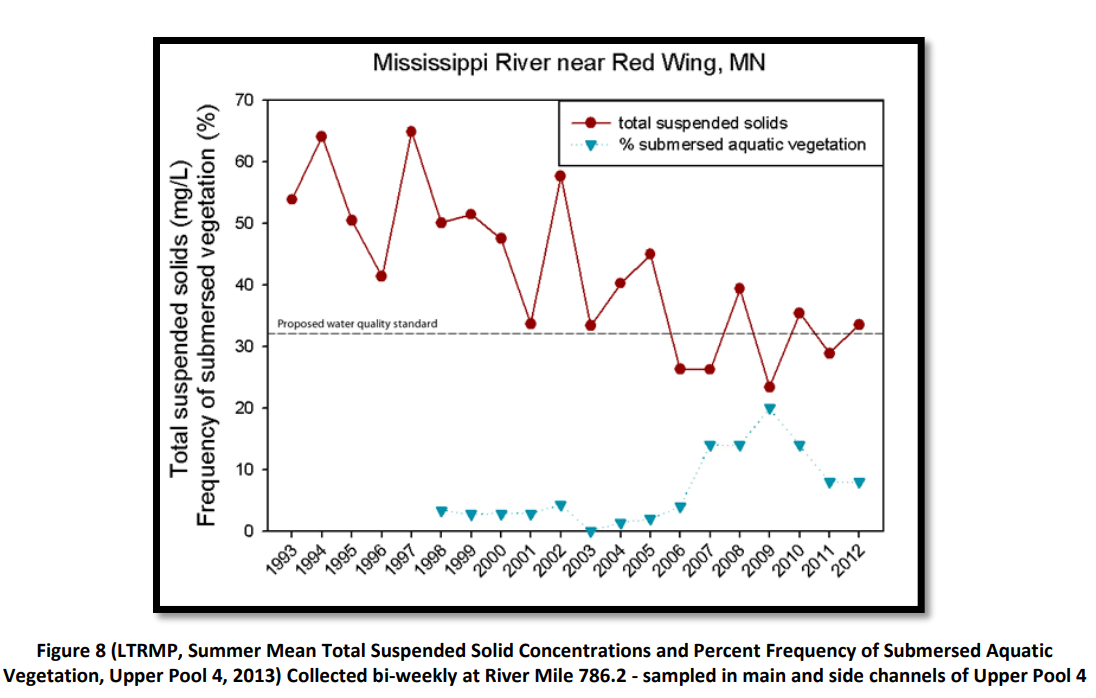How much do you know about the plants that grow in the Mississippi River? Not just the ones along the shoreline, but underneath the surface of the water, too! The presence or absence of some aquatic vegetation in the river, lake, and backwaters indicates an ecological shift occurring in the system. If we see more native vegetation, like narrow leaf pondweed and wild celery, it is because the water is clear enough for it to grow.
Vegetation is measured in Lake Pepin and the surrounding backwaters annually by staff at the Lake City Department of Natural Resources. In 2006 and 2007, less than 1% of Lake Pepin’s surface acres contained submerged, floating leaf, or emergent aquatic vegetation. Fortunately, biologists have been documenting increasing trends of vegetation in this stretch of the river and have identified the presence of 58 different aquatic plant species!
Submersed aquatic vegetation in the Mississippi River is subjected to variable light conditions throughout any growing season or series of growing seasons. Monitoring data shows that submersed aquatic vegetation can withstand limited durations of high turbidity, but that prolonged turbid conditions, especially over two or more consecutive years, can impair growth and survival.
The Minnesota Pollution Control Agency has developed a standard for total suspended solids at the head of Lake Pepin that - if achieved in 6 out of 10 years - would allow more consistent growth of submersed aquatic vegetation.
Recent monitoring data suggest that we may be meeting or close to meeting this target and Lake Pepin Legacy Alliance is gathering information to better understand what this means for the overall health of the lake. There is no Minnesota water quality standard for the rate of in-filling of Lake Pepin from sedimentation.




